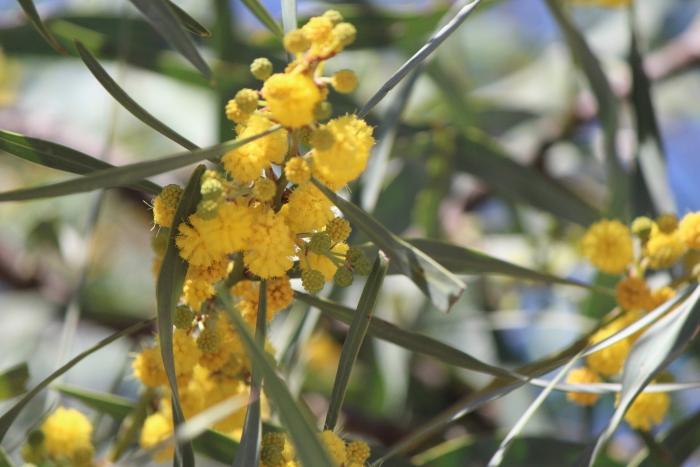Retinodes Water Wattle
(Acacia retinodes)
Retinodes Water Wattle (Acacia retinodes)
/
/

© José Belem Hernández Díaz
CC BY 4.0
Image By:
© José Belem Hernández Díaz
Recorded By:
Copyright:
CC BY 4.0
Copyright Notice:
Photo by: © José Belem Hernández Díaz | License Type: CC BY 4.0 | License URL: http://creativecommons.org/licenses/by/4.0/ | Uploader: belemqueuedelapin | Publisher: iNaturalist |

























Estimated Native Range
Summary
Acacia retinodes, commonly known as Retinodes Water Wattle, Swamp Wattle, Wirilda, Ever-blooming Wattle, and Silver Wattle, is an evergreen shrub or small tree native to the temperate coastal areas and mallee regions of South Australia, Victoria, and Tasmania. It typically grows to a height of 20-33 feet (6-10 meters) and can form suckers. The bark is dark brown to black and deeply furrowed, while the branchlets are smooth and sometimes pendulous. The foliage consists of green to grey-green phyllodes that are narrowly oblanceolate to linear, measuring 2-6 inches in length. Acacia retinodes is notable for its year-round blooming habit, producing yellow flowers in short racemes that are highly attractive to pollinators.
This species is valued for its continuous flowering, which provides visual interest and supports wildlife throughout the year. It is used for ornamental purposes in gardens and landscapes, often as a specimen plant or for screening due to its dense growth habit. Acacia retinodes prefers full sun to part shade, tolerates a range of soil types provided they are well-drained, and is drought-resistant once established. It is also used for erosion control and as a windbreak in coastal areas. Gardeners should be aware that it can become invasive outside its native range, and its suckering habit might require management to prevent unwanted spread.CC BY-SA 4.0
This species is valued for its continuous flowering, which provides visual interest and supports wildlife throughout the year. It is used for ornamental purposes in gardens and landscapes, often as a specimen plant or for screening due to its dense growth habit. Acacia retinodes prefers full sun to part shade, tolerates a range of soil types provided they are well-drained, and is drought-resistant once established. It is also used for erosion control and as a windbreak in coastal areas. Gardeners should be aware that it can become invasive outside its native range, and its suckering habit might require management to prevent unwanted spread.CC BY-SA 4.0
Plant Description
- Plant Type: Shrub, Tree
- Height: 5-20 feet
- Width: 5-15 feet
- Growth Rate: Moderate
- Flower Color: Yellow
- Flowering Season: Spring, Summer, Fall
- Leaf Retention: Evergreen
Growth Requirements
- Sun: Full Sun, Part Shade
- Water: Medium
- Drainage: Fast, Medium, Slow
Common Uses
Bird Garden, Drought Tolerant, Erosion Control, Fragrant, Hedges, Low Maintenance, Showy Flowers, Street Planting
Natural Habitat
Native to temperate coastal areas and mallee regions of South Australia, Victoria, and Tasmania
Other Names
Common Names: Water Wattle, Wirilda, Silver Wattle, Everblooming Acacia, Swamp Wattle
Scientific Names: , Acacia retinodes, Acacia retinodes var. retinodes, Acacia retinoide, Acacia rhetinoides, Acacia rhetinoides var. oraria, Acacia rhetinoides var. oraria, Acacia rhetinoides var. uncifolia, Racosperma retinodes, Racosperma retinodes var. retinodes,
GBIF Accepted Name: